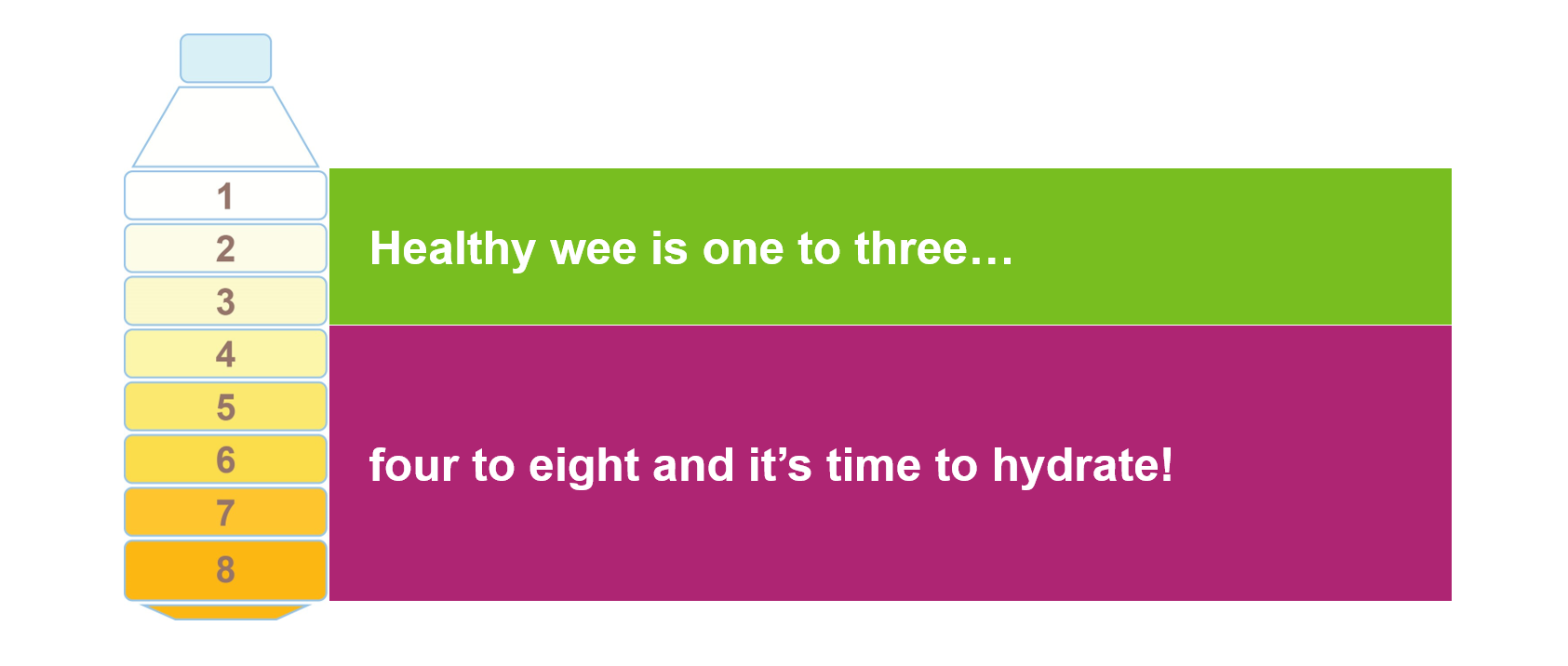Healthy hydration
Last edited: 16/12/2022
Fluid is essential for life, without fluids we would only survive a few days. It plays a critical role in all of our body functions. We all need to replace fluid lost through breathing, sweat and flushing out waste products. This leaflet gives information about meeting your fluid needs.
Why are fluids important?
The following are just some of the functions that water is involved in.
- Prevention of pressure sores or ulcers and skin elasticity and softness.
- Removing waste products and toxins through the kidneys.
- Prevention of urinary tract infections.
- Brain function and concentration.
- Blood pressure and heart health.
- Muscle and joint movement.
- Allowing your medications to work effectively.
- Preventing falls - dehydration can increase dizziness and make you feel faint.
- During a heat wave or hot weather, dehydration can also lead to heat exhaustion and heat stroke.
What are the signs of dehydration?
- When you feel thirsty your body is telling you that you are becoming dehydrated. As we get older the thirst mechanism is reduced, which means we may not feel thirsty as often. It is important to drink, even if you don’t feel thirsty.
- The simplest way to know if you are drinking enough is to check the colour of your urine. Your urine should be pale or straw coloured. The darker your urine the more likely it is you need to increase your fluid intake. If you are in doubt, check it compared to our guide below.

How much fluid do we need?
Most of us need between 1.5 and 2.5 litres of fluid a day which is the same as six to eight cups a day. However, extra fluid will be needed when sweating more, for example, through heavy work, exercise or in hot weather.
Which fluids could I drink?
Fluid is not just about water, you can also choose other drinks that you enjoy. These can include tea, coffee, milky drinks, fizzy drinks, fruit juice, squash and fruit tea.
Fruit juice and fizzy drinks contain sugar, if you have diabetes please check with your healthcare professional about using these drinks.
What about caffeine?
Tea and coffee can count towards your daily fluid needs. Tea and coffee contain caffeine, which is known to have a diuretic effect (increases the amount of urine produced), however this effect is very small.
Nourishing drinks
If you are underweight or have lost a lot of weight recently, nourishing drinks can help you get enough nourishment to prevent any further unwanted weight loss. If you have concerns speak to your healthcare professional.
These could include:
- full fat milk, milkshakes, smoothies or flavoured milk
- hot milky drinks, such as milky tea and coffee, hot chocolate and Ovaltine or Horlicks.
Tips to maintain hydration
- Try to have a drink at regular intervals throughout the day. If you cannot manage large amounts, try to have small sips throughout the day instead. Keep a drink close by to remind yourself to drink regularly and to keep track on how much you are managing.
- You could try using a straw in your glass or a sports bottle cap on your bottle of fluid.
- If you have difficulty preparing drinks for yourself, ask your carers to leave drinks beside you or somewhere you can easily access them.
- Foods can contribute to your fluid intake also, such as ice lollies, soup, stews, yoghurts and jelly. Some fruits and vegetables, such as melon, tomatoes and cucumber, are also good sources of fluid.
- If you feel thirsty all the time it could be that you have a health condition such as diabetes. Please check with your doctor if you are concerned.
- If you have problems swallowing liquids or are coughing whilst eating or drinking please speak to your healthcare professional.
Contact us
Please contact the service though our Central Appointments Team:
0300 123 0861
kcht.centralisedappointmentteam@nhs.net
Monday to Friday, 9am to 3pm
This information should only be followed on the advice of a healthcare professional.
Do you have feedback about our health services?
0800 030 4550
Text 07899 903499
Monday to Friday, 8.30am to 4.30pm
kentchft.PALS@nhs.net
kentcht.nhs.uk/PALS
Patient Advice and Liaison Service (PALS)
Kent Community Health NHS Foundation Trust
Trinity House, 110-120 Upper Pemberton
Ashford
Kent
TN25 4AZ
![]()
Donate today, and help the NHS go above and beyond. Visit kentcht.nhs.uk/icare
If you need communication support or this information in another format, please ask a member of staff or contact us using the details above.
